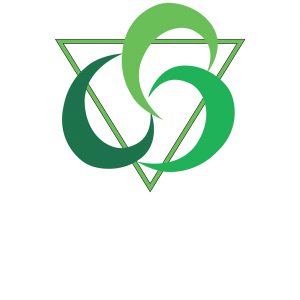Originally published in the June 2015 issue of Bowen Hands, The Journal of the Bowen Therapy Academy of Australia.
— Written by Sandra Gustafson MHS BSN RN
Cancer is a disease that affects all societies around the globe. With all the financial, medical and scientific research resources so focused on ‘finding the cure for cancer,’ and no clear result in sight, one has to wonder if medicine is approaching this quest from the best angle. Thousands of researchers worldwide are employed in the medical/pharmaceutical industry to find and create curative treatments and drug compounds. Approximately thirty-two Nobel Laureates have received Nobel Prizes for cancer research. Billions of dollars are spent each year, and yet this disease has not been eradicated. Why not? One reason is reductionism – the biomedical view of trying to isolate and target specific molecular pathways to develop curative treatments, without understanding that cancer, and cancer-treatment, requires a holistic biological approach, not a one-system/cure-fits-all.
A holistic model addresses the complexities of host-disease-drug interactions and offers personalised therapies that boost the immune system’s ability to activate its own defence against cancer cell replication. Factors affecting the microenvironment of the host and cancerous tumours are finally becoming the focus of cancer-research. It is crucial that healthcare professionals develop deeply individualised integrative and patient-specific interventions, aimed at supporting the intrinsic resources within clients’ bodies, to mount their personal best defence against cancer proliferation, surviving cancer treatments and returning to wellness.
Bowenwork (or Bowen therapy as it is commonly known in Australia) is a holistic technique that facilities the body’s innate ability to heal itself, yet students and practitioners have often asked me if there could be a risk of Bowenwork “spreading” cancer by enhancing blood circulation and lymphatic flow.
There is no evidence that Bowenwork will spread cancer!
On the contrary, Bowenwork can help people with compromised lymphatic and circulatory systems, and support them in coping with and recovering from their treatments (Hansen, 2012). There is no evidence that Bowenwork, a gentle, soft-tissue relaxation technique (or massage, and other gentle bodywork) applied correctly, will facilitate the spread of cancer (Colling, MacDonald & Walton, 2012; Cancer Council NSW, 2014). Lymphatic circulation is enhanced by the action of involuntary smooth muscle, and skeletal muscle-contraction. If circulation enhancement was a causative factor in spreading cancer metastases, then so, too, would exercise, walking up and down stairs, or taking hot showers or baths (Collinge et al., 2012).
Compassionate touch is essential for humans to thrive emotionally, physically and mentally, especially during illness and times of distress. It reduces pain, tension, nausea, anxiety and physical discomfort, and improves self-esteem, a sense of wellbeing and calm. Bowen therapy, is recommended by the Cancer Council of New South Wales (Australia) for people with cancer as: “a gentle style of touch (that) may help promote relaxation and reduce pain. Through gentle touching and the movement of soft tissue and muscles, the body feels deeply relaxed.” (The Cancer Council of NSW (CCNSW), 2014).
Bowenwork can improve the quality of life for people living with cancer, with consideration for their special needs and vulnerabilities. Compassionate Bowenwork practitioners can help clients’ experiences be less isolating through their treatments, apply gentle procedures to support recovery, and create deep, healing connections to give clients a sense of pleasure, hope and being “whole” again. Reports of Bowenwork’s efficacy in optimising health and wellbeing are compelling, and it is no wonder that practitioners and clients alike are drawn to Bowenwork’s potential for helping people living with cancer.
You can watch an interview of a client speaking to Sandra Gustafson here.
Image credit: Bowenwork for Life by Sandra Gustafson
References:
1. Cancer Council of NSW (CCNSW). (2014). Types of massage and touch therapies. Retrieved online on February 6, 2014 at https://cancercouncil.com.au/18124/b1000/massage-and-cancer-42/massage-and-cancer-different-types-of-therapies/
2. Collinge, W., MacDonald, G. & Walton, T. (2012) Massage in Support Cancer Care. Seminars in Oncology Nursing, 28(10), pp.45-55. doi:10.1016/j.soncn.2011.11.005
3. Hansen, C. (2012). PhD Candidate Dissertation: “A Pilot Study on Bowenwork for Symptom Management of Women Breast Cancer Survivors with Lymphedema,” University of Arizona, USA. Retrieved on February 22, 2014 at: https://www.nursing.arizona.edu/Library/Christine%20Hansen%20-%20Dissertation%20March%202012.pdf


Very interesting reading. My husband has non-Hodgkins Lymphoma. I treat him with Bowen on occasions when he looks very hunched and tired. I often suggest that he has Bowen more regularly but he often puts me off, its too cold, too late etc. I must persevere as obviously more regular treatment would be helpful. He also had prostate cancer, and weekly Bowen treatments helped him greatly before he had treatment.
Can you please tell me when Sandra Gustafson will be holding the next course in Australia for PLWC. Kind regards, Suzanne Hamson @ Shine Healing Hands 🙌
Hi Suzanne, thanks for your comment. At this stage we don’t have any plans for international instructors to visit Australia due to COVID-19, but you could sign up to our blog here to receive notifications of future tours, or contact Sandra directly here. We’d also recommend joining our Facebook community if you haven’t already – https://www.facebook.com/bowentrainingaustralia/.